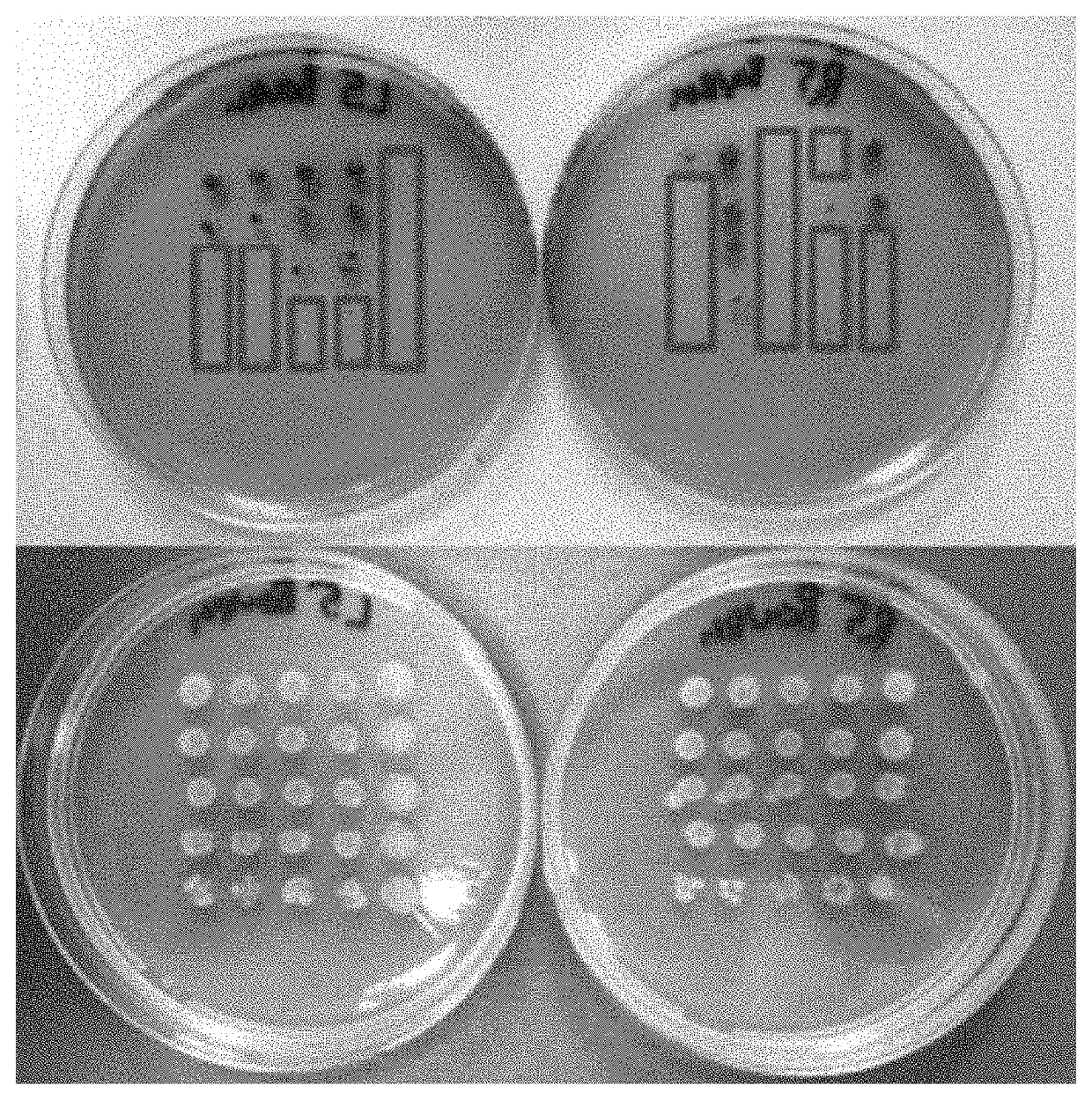Pseudomonas strains and consortia thereof for use in protection against plant diseases
a technology of plant diseases and strains, applied in the field of agriculture and microbiology, can solve the problems of no effective chemical means of control, serious environmental problems, and substantial crop loss in most areas of the world
- Summary
- Abstract
- Description
- Claims
- Application Information
AI Technical Summary
Benefits of technology
Problems solved by technology
Method used
Image
Examples
examples
1. Selection of Pseudomonas Strains for Use in Protection Against Plant Diseases
[0047]We obtained some 90 microbial strains from various sources of which we assumed they would belong to the group of (fluorescent) Pseudomonads as the strains were isolated on Pseudomonas-selective cetrimide plates (Tritium microbiology, Eindhoven) to demonstrate the ability to produce fluorescent compounds at room temperature (21° C.) or at 4° C.
[0048]The strains were screened using a set of fluorescent Pseudomonad-specific PCR primers as described by Kim et al. (2013, J. Agric. Chem. Environ. Vol 2, No 1. pp 8-15). Strains positively identified as Pseudomonads were further subjected to 16S ribosomal gene-sequencing in order to identify the isolates at species level. Strains identified as P. aeruginosa were eliminated as potential human pathogens.
[0049]The remaining Pseudomonas strains were subjected to screening for their ability to use carbon and nitrogen sources as required for their ability to for...
PUM
| Property | Measurement | Unit |
|---|---|---|
| Outlet temperature | aaaaa | aaaaa |
| Outlet temperature | aaaaa | aaaaa |
| Outlet temperature | aaaaa | aaaaa |
Abstract
Description
Claims
Application Information
 Login to View More
Login to View More - Generate Ideas
- Intellectual Property
- Life Sciences
- Materials
- Tech Scout
- Unparalleled Data Quality
- Higher Quality Content
- 60% Fewer Hallucinations
Browse by: Latest US Patents, China's latest patents, Technical Efficacy Thesaurus, Application Domain, Technology Topic, Popular Technical Reports.
© 2025 PatSnap. All rights reserved.Legal|Privacy policy|Modern Slavery Act Transparency Statement|Sitemap|About US| Contact US: help@patsnap.com

